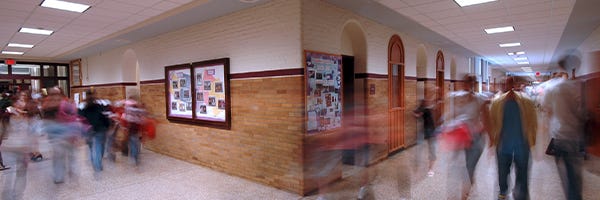Access Angle: Healthy Hand Hygiene For All
- Aug 19, 2021
- 0 Comments


Gabriel Ryan, School Health Blog Writer and Contributor
Healthy Hand Hygiene For All
Schools across the country are in the process of preparing for the upcoming school year. Unlike last year, many students and staff will return to in-person instruction and learning right away. Staying safe and healthy will continue to be a priority for staff, families, and students. Did you know, according to the U.S. Center for Disease Control (CDC), “handwashing is the single most important means of preventing the spread of infection”? This Access Angle segment is focused on hand hygiene; what is hand hygiene and why is it important?
What is hand hygiene?
Hand hygiene is cleaning your hands with soap and water, which reduces harmful germs on the hands. Hand hygiene can also include using alcohol-based hand sanitizer.
The CDC has a handwashing website with several detailed articles on how and why handwashing is important, such as “Show Me the Science- How to Wash Your Hands” and “When and How to Wash Your Hands”. They also promote the following six steps:
Handwashing Six Steps:
1. Wet hands with water.
2. Apply enough soap to cover all hand surfaces.
3. Rub hands together and scrub everywhere.
4. Wash the front and back of your hands, in between your fingers, and under your nails.
5. Rinse hands with water.
6. Dry hands completely using a single-use towel or air dry
Note: Wash hands with soap and water for at least 20 seconds. Use an alcohol-based hand rub that contains 60% alcohol if soap and water are not available.
The Minnesota Department of Health website has several easy-to-follow webpages full of great information for teaching hand hygiene for people of all ages, along with posters and videos. I found one of their hand-washing instructional videos on “How to Wash Your Hands” especially interesting, as they made sure to include a video with descriptive audio. This is a great resource for those who may benefit from a little extra detail along with the visual. You can even find this fantastic poster that says “Wash Your Hands”, in 24 languages.
What if you are unable to reach the soap, faucet, or pull up to the sink?
Accessing the sink can be very difficult for some people out in the community as sinks are not always easy to reach for someone using a wheelchair, or who has reduced arm mobility or reach. Access may be limited by an under-sink cabinet preventing someone using a wheelchair from getting close enough to reach the faucet. It is also difficult if the counter is too high or too low. Soap dispensers are often out of reach, followed by the paper towels which are frequently even further away. Over the last several years, more businesses and schools have installed motion activated faucets, soap and paper towel dispensers. This has increased access for all users, as it’s a universal design approach. As someone who uses a wheelchair, there are a few things I have found helpful when I cannot reach the sink:
· Hand wipes and hand sanitizer- these are easy and convenient to bring along in a backpack or bag, and some containers even clip to a belt loop.
· Paper towel with water- although this does not follow the CDC’s recommendation to use water and soap, sometimes you just have to reach what you can and at least wipe or rinse your hands until you can get to a more accessible sink or have assistance.
· Ask for help – I have found that most people will give you a hand, they just don’t know how to help. You could ask someone to turn on/off the water, put soap on a paper towel for you, grab a dry paper towel for you, etc. Staff may be able to assist.
A tip: just because someone has a disability, doesn’t always mean they need help, (so don’t assume), but if you see someone struggling at the sink you may just make someone’s day if you ask them, “anything I can do to help?”
Helpful related School Health products:
Below I have highlighted a few School Health products that have been helpful to both educators and parents:
· Handwashing posters are a great visual to display near sinks
· Time Timer WASH Handwashing Timer hands free timer has a bright visual display, is portable, battery operated, and also has a music feature! Using a timer can also be a fun way to assist children in washing their hands for the recommended time. Watch Dr. Ray’s video overview!
· Touchless Dispenser and Stand with Universal Reservoir dispenses a product of your choice and is available either as a wall mount or with an adjustable stand.
· safeHands Alcohol Free Foam Hand Sanitizers are a great alternative for those sensitive to alcohol content in other sanitizers. These sanitizers kill 99.99% of common germs and are gentle on hands.
· Handwashing and Hygiene Dominos Game helps children connect good nutrition and good personal hygiene to good health. Game contains 28 2-sided 2" x 4" laminated, heavy cardstock tiles and an instruction sheet with storage box.
Mark your calendar for Global Handwashing Day on October 15th, a day dedicated to increasing awareness and understanding about the importance of handwashing!


